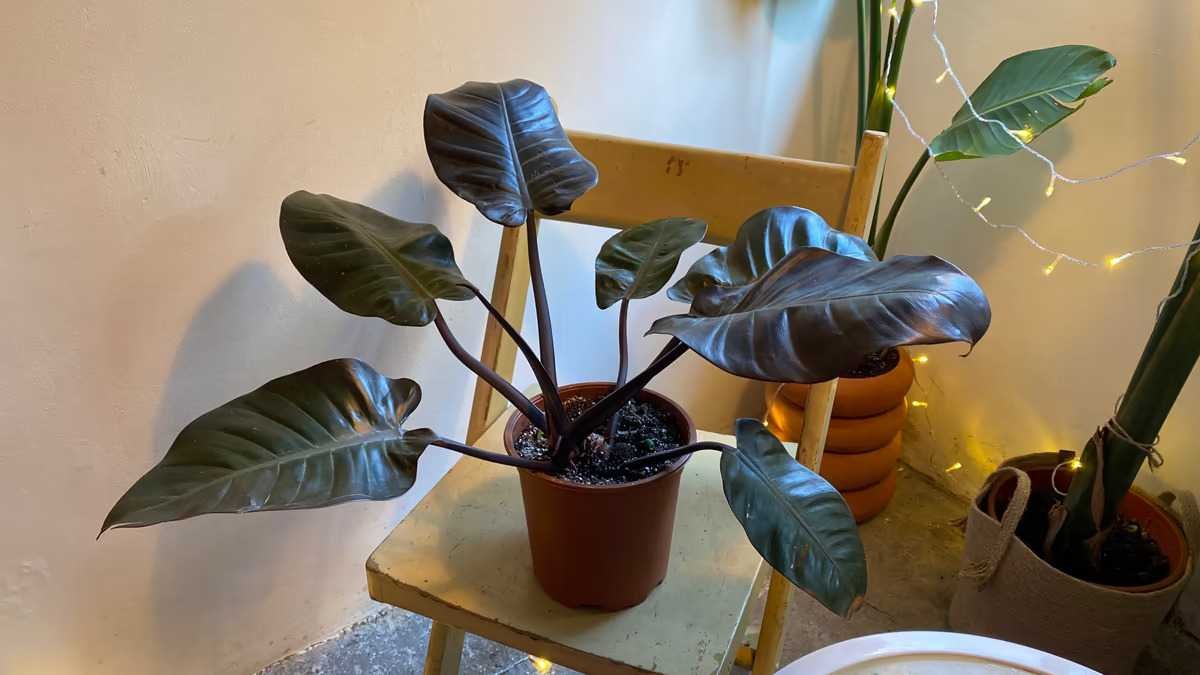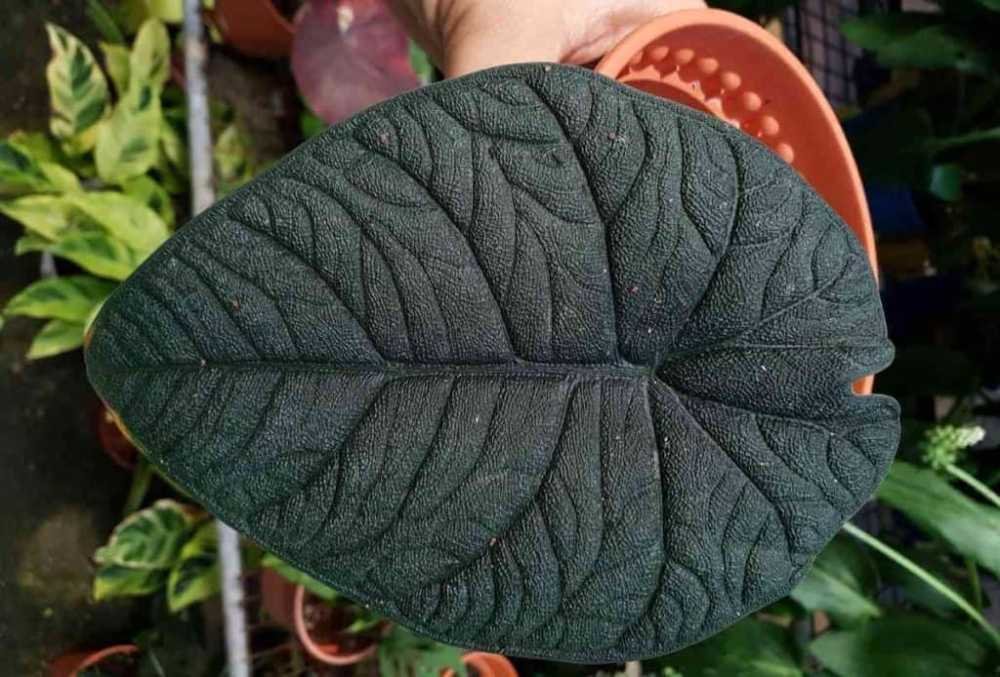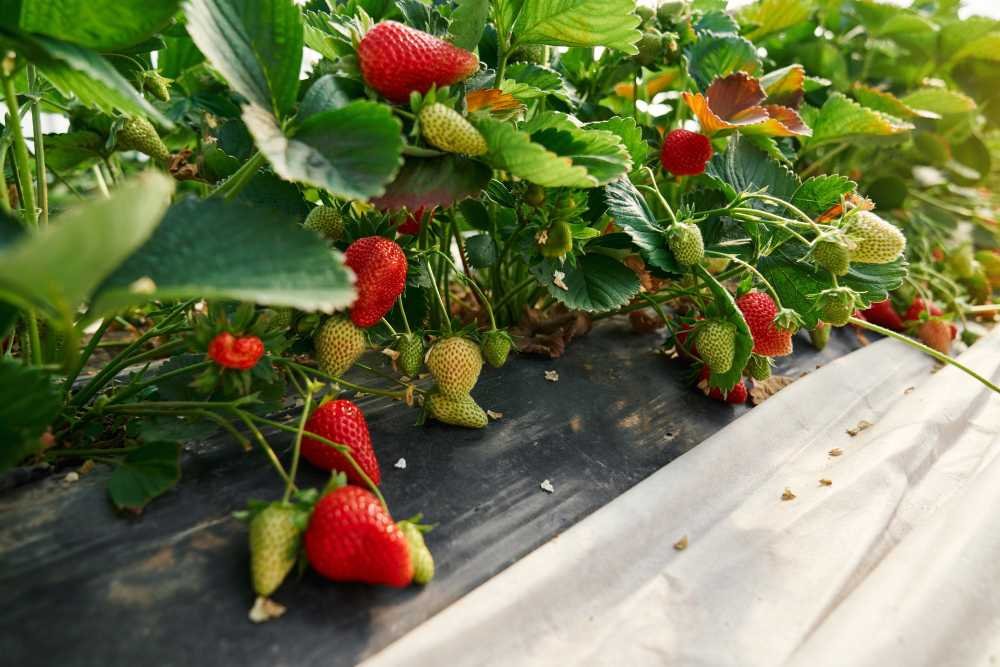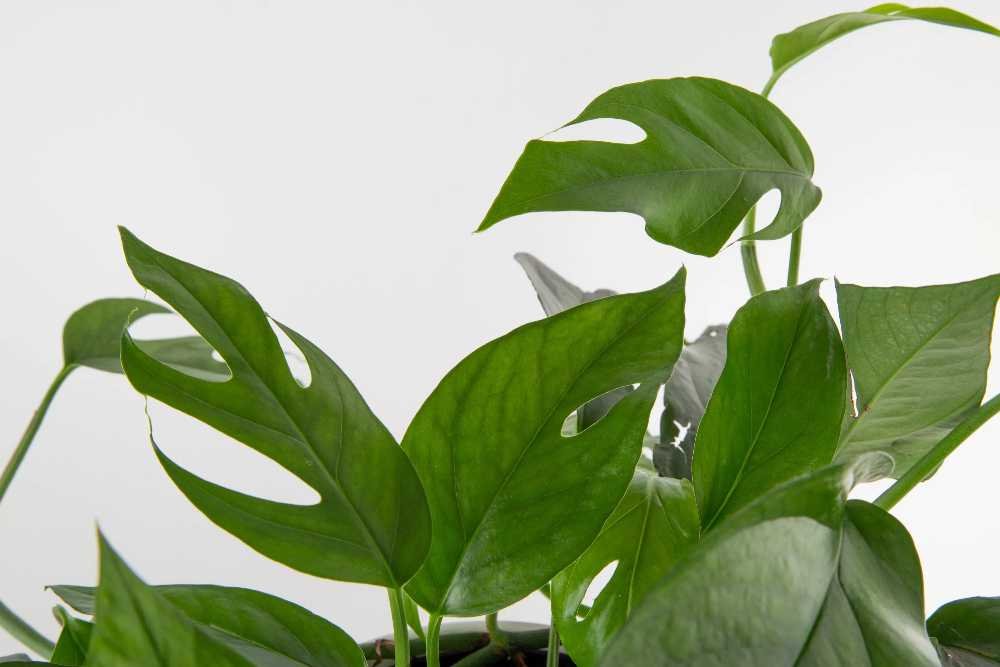Do you want an indoor plant that gives a dark feel to your space? Look no further than Philodendron” Black Cardinal”. This houseplant continues to be popular, thanks to its unique, dark, leathery foliage. The Black Cardinal Philodendron is a Philodendron hybrid that is becoming increasingly trendy due to its aesthetics and ease of care. This article has everything you need to know about growing and caring for Black Cardinal Philodendron.
What is Black Cardinal Philodendron?
Philodendrons are tropical understory plants whose origins lie in Central and South America. The Black Cardinal Philodendron, whose scientific name is Philodendron erubescens, is a hybrid developed in Florida and patented in 1983 as Philodendron Black Cardinal. It is a compact non-vining plant with a thick, trunk-like stem and is self-heading.
The Black Cardinal Philodendron has wide color-changing leaves that turn darker as the plant matures. The leaves start as burgundy but turn dark green and almost black upon the plant’s maturity. Philodendron ‘Black Cardinal’ has broad blackish-green oval leaves. The leaves have a leathery texture, making the plant a unique addition that stands out in any setting.
Although the Black Cardinal Philodendron rarely flowers, it makes up for it with its unique, dark foliage. It is a slow grower, and you might have to wait for as long as ten years for it to reach maturity. As an indoor plant, Black Cardinal Philodendron can grow up to 36 inches tall with 18 inches spread. Its medium size makes it an excellent indoor plant as it takes up little space.
Since the plant is a product of understory Philodendrons that grow under shades in their natural habitat, Black Cardinal Philodendron is no different. The plant can survive in shaded areas and have a high tolerance for low-light conditions. Being a hardy plant, you can grow and care for the Black Cardinal, regardless of experience.
One important thing to note about Black Cardinal Philodendron is its toxicity. The plant’s leaves contain calcium oxalates that cause skin irritation, swelling, and pain when ingested. Cats may suffer diarrhea and vomiting, while dogs may start wheezing and drooling after consuming the plant. If you plan to acquire the houseplant, keep it out of reach of children and pets.
How to Incorporate the Black Cardinal Philodendron into Your Home
Black Cardinal Philodendron is a low-compact plant that can fit into any space. You can place it on the ground, on the table, or on top of a shelf and still create the ambiance you want. Depending on your style and preference, you can display the plant alone or arrange it with other plants without it losing its charm.
Here are tips for incorporating Black Cardinal Philodendron into your home.
- Place it on a side table or shelf and add a few pieces of décor to draw attention to the plant. Use brightly colored pots for extra drama.
- Hang your Philodendron Black Cardinal in macramé hangers or hanging baskets to display its stunning leaves. A wall-mounted plant hanger or shelves will also showcase your plant while maximizing space, creating a live wall.
- If you are feeling quite artsy, create a DIY plant stand and place the plant on it to achieve a vertical look. A DIY plant hanger with ropes is also a great way to display the Black Cardinal Philodendron.
- Let the dark foliage shine through by placing the Black Cardinal Philodendron against a white or light-colored background to create a striking contrast.
- Arrange similar Black Cardinal Philodendron plants in a row along your balcony and take advantage of the repetitive pattern. You can also mix it with other plants of different textures and colors to create a diverse combination of greenery.
Care and Maintenance
The Black Cardinal Philodendron is a hardy plant that requires little effort and attention to flourish. Below are tips for growing and maintaining a healthy and beautiful Black Cardinal.
1. Soil Type
The best soil type for Black Cardinal Philodendron is one with good drainage and does not remain waterlogged. The plant also prefers slightly acidic soil (pH 5.5-6.5) full of organic matter. Stay away from alkaline soil. You can add perlite or orchid black for drainage purposes.
2. Light
Bright, indirect light is ideal for the Black Cardinal Philodendron. You can also filter the light using blinds, as direct sunlight scorches the leaves and causes them to turn yellow. Since it doesn’t have strict light requirements, the Black Cardinal Philodendron can still tolerate low light, although it may fail to grow to its full potential.
If your plant is leggy or has too much space between leaves, it may be due to insufficient light.
3. Temperature
Your indoor temperature is perfect for Black Cardinal Philodendron. It will thrive at temperatures between 650 F and 850 F. However, it should not drop below 550 F as cold and freezing temperatures can kill the plant. The Black Cardinal Philodendron has zero frost hardiness and is accustomed to moderate temperatures.
4. Humidity
Philodendrons love high humidity levels of about 70%. However, your indoor Black Cardinal Philodendron will be okay with 40%-50% humidity, although higher humidity stimulates faster growth. To counter low humidity levels, use a humidifier or group the plant with other high-humidity plants. You can also place the plant on a water tray with pebbles to increase humidity levels.
5. Watering
The Black Cardinal Philodendron is not a thirsty plant. Water the plant occasionally and allow the top soils to dry between watering sessions. You can check the soil for moisture by inserting an inch of your forefinger into it.
Do not overwater the plant to avoid root rot, and avoid leaving it thirsty for too long. If you notice droopy leaves, it may be because you water too much or too little. Correct your watering frequency for the plant to recover.
6. Fertilizer
Fertilizer is not necessary for the Black Cardinal Philodendron. If you must fertilize, use a water-soluble balanced fertilizer, and dilute to half its strength. Apply the fertilizer every 4-6 weeks during spring and summer when the plant is in its growing season.
During winter, reduce fertilizer to once every eight weeks. Calcium and magnesium deficiency will show through pale new leaves, while small leaves and slow growth indicate inadequate nutrients.
Pruning
You don’t have to prune the Black Cardinal Philodendron as it is designed to maintain a compact shape. It doesn’t sprawl like its parent plant. The only time to prune the plant is when older leaves start dying, and you have to trim them. In such cases, use a sharp knife and wear gloves to prevent the sap from touching your skin, as it can cause a rash.
Propagation
You can propagate the Black Cardinal Philodendron through stem cuttings or division. To propagate through stem cuttings, obtain a small cutting from the main plant and root it in moist soil or water. Once the roots appear, you can plant them in your desired pot. If you root using water, change the water regularly to prevent bacteria that may affect the plant.
When propagating through division, pull out the root ball and shake off as much soil as possible. Separate the plants gently using your hands or a sharp knife whenever necessary. Ensure the plants you want to propagate have roots and a stem each. You can propagate using the division method when repotting the plant.
Repotting
The Black Cardinal Philodendron grows slowly, meaning you may have to wait 2-3 years before repotting. You know it’s time to repot when you see roots protruding through the drainage holes or when the plant has filled its pot.
Choose a pot that is one size bigger and ensure it is glazed or made of plastic to help maintain soil moisture. It is advisable to change the soil to avoid pathogen build-up.
Common Issues Affecting the Black Cardinal Philodendron
Some of the issues you might encounter while growing Black Cardinal Philodendron include:
Pests
The best way to find pests on your plant is by checking the leaves. Aphids, mealy bugs, and scale insects that attach themselves to the plant’s leaves are some of the pests you might have to deal with.
To get rid of aphids, simply wash the plant to rinse the bugs off. Mealy bugs look like little cotton lumps, and you can eliminate them by wiping them off with rubbing alcohol. Scale insects will easily fall off if you scrape them away.
To prevent future occurrences, wipe the leaves with insecticidal soap and neem oil at least once a month.
Diseases
While the Black Cardinal Philodendron is resistant to most houseplant diseases, it can suffer from root rot. Root rot results from a fungal infection when you leave your plant in wet soil. It usually occurs due to overwatering.
Signs of root rot include yellow and droopy leaves, soft stems, and black, smelly roots. Remove the diseased parts and replant the remaining plant in a new pot with fresh soil to correct the situation.
Benefits of the Black Cardinal Philodendron
The decorative effect of the Black Cardinal Philodendron is unmatched, but that is not all. Besides being an element of beauty, you also enjoy the following benefits when you have this indoor plant in your space.
1. Aesthetics
The Black Cardinal Philodendron adds a touch of elegance and visual appeal to any space you put it. The contrast between the new burgundy leaves and dark, mature foliage is sure to add delicate beauty to your home or office. It is also highly versatile and lends itself to various decorative arrangements, be it hanging baskets or table-top displays.
2. Air Purification
During photosynthesis, the Black Cardinal Philodendron absorbs carbon dioxide from the air and releases oxygen. It also purifies the air by absorbing pollutants and other toxins. This improves air quality, especially if you have limited space or ventilation.
3. Lower Stress Levels
Having a houseplant like the Black Cardinal Philodendron in your home or office is one way to create a relaxing environment and lower your stress levels. The calmness that comes with being around nature can brighten up your mood, help you remain calm, and contribute to your overall well-being.
4. Improved Mental Health
Interacting with plants and tending to their needs can be therapeutic. It is rewarding to watch your Black Cardinal Philodendron grow and thrive. The sense of responsibility and the connection you get by interacting with your houseplant can positively impact your mood and improve your mental health in the long run.
Black Cardinal Philodendron: Conclusion
Having the Philodendron Black Cardinal in your home or office is a great way to bring nature indoors and reap its numerous benefits. The low-maintenance nature of this medium-sized plant also makes it an easy choice for indoor gardeners.
Keep the Black Cardinal Philodendron near an east-facing window where direct sun rays do not hit the leaves. You can also expose it to the mild morning and afternoon sunshine for a few hours to meet its light requirements.




